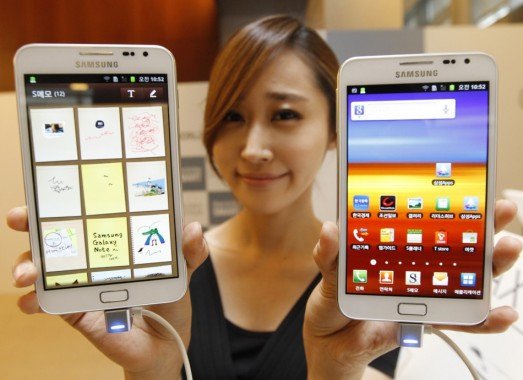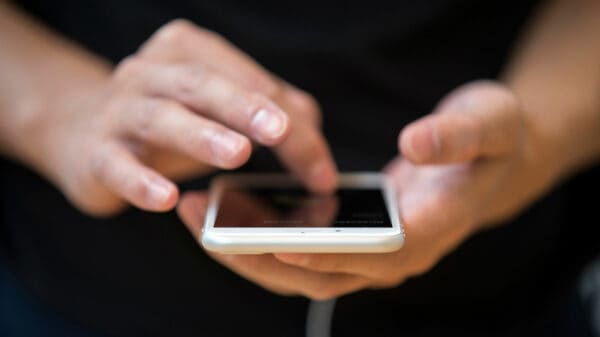The name is ‘phablet’ is rather derogatory in nature. The word was used as a term of abuse by tech pundits who believed that smartphones with 5+ inches of screen size cannot succeed. The very word conjures up an image of a fat, bloated creature that looked podgy and lethargic next to its slimmer counterparts. Dell streak, the first phablet, bombed as it was difficult for consumers to accept such a large device at a time when they were just beginning to get comfortable with 3-inch screen of iPhone and other smartphones. At that time, it seemed that phablets do not have any place in the market.
But when Samsung entered the market with Galaxy Note, the market already had 4-inch smartphones. After using a 4-inch screen, the 5-inch and larger screen of the modern phablet was just what the tech-savvy customers wanted. On one hand most tech journalists were busy writing off phablets, while on the other hand Samsung was busy building them. In news that shook the foundations of the smart mobile market, Samsung Galaxy Note II showed that phablet sales are rising exponentially. This 5.5-inch giant smartphone (or mini tablet?) sold more than 2 million units in less than two months of its release.
Now, more and more device manufacturers – including big names like ZTE, Huawei, HTC, Lenovo, Sony and LG – are offering similar devices that stand at an intersection of smartphones and tablets. What is it that is making people buy large, unwieldy devices? Why does a device that seems doomed to fail turn into such a huge success? Let’s take a look at three solid forces that have propelled phablets to the top.
1. Calling Is Not A Big Concern Anymore
The mobile phones we used in the late 1990s served a primary purpose: they allowed us to make and receive calls on the go. The biggest concern of industry experts about the introduction of giant smartphones with more than 5-inch screen size was based on a simple logic – normal people cannot hold such a broad phone in their hands and talk comfortably.
However, industry statistics show that out of the total time users spend on smartphone, only 10-15% is used for calling. In addition, the trend of using handsfree while talking on the smartphone further reduces the need for a mobile that one can hold in one’s hands. So, the size of the device doesn’t work against it.
2. Ideal Size for Data Consumption
Most smartphone users spend nine-tenths of their time on smartphone accessing the Internet, playing games, watching videos, viewing social media sites, texting, or taking snaps. As the list of primary activities suggests, the smartphone is used for consuming data. All these tasks are made easy if the screen size is larger. Phablets, with over 5-inches of screen space are ideal for an average user. This screen size combines the facility of a tablet with the calling features of a smartphone.
3. Single Multipurpose Device
High adoption rate by consumers in Asian nations has played a substantial part in the success of phablets. In emerging markets, including India, Japan, China, and Brazil, the people do not see sense in buying and maintaining two separate devices. Until now, they have been forced to choose between smartphones and tablets.
Phablets are attracting a number of users who realize that they can use the same device as a mini-tablet and a smart mobile. For people with a limited budget, phablets are easily the best option in the market. Needless to point out, the same logic applies to consumers in rich countries who do not want to spend on wireless connectivity for two different devices.
To Wrap It Up
Phablets are here to stay and they are going to sell like crazy in 2013. They may be too big for one’s pocket, they may feel slightly chunky, and they many not fit the smartphone or the tablet category, but the benefits that they offer easily outweigh the minor discomfort their size may cause.
Alicia Carter is a Professional Android app developer working with "Perceptive Mobile Apps", a leading Custom Mobile App Development Company. She has worked on challenging projects that have provided her with unique insights into the development of mobile apps. She loves sharing the same through her write ups for various blogs and websites.

3 Comments
Leave a Reply
Cancel reply
Leave a Reply
This site uses Akismet to reduce spam. Learn how your comment data is processed.























































































































































































Evan
March 1, 2013 at 10:29 am
I was always wondering how all those companies measure the tablet and smartphones size. I mean how do they be sure that it will be just right for different kind of people/nationalities/age group… For instance this particular Phablet is smaller than original tablet but bigger than smartphone. Where is the sense?
Steve Morris
March 3, 2013 at 2:33 pm
I think the word phablet will disappear as smartphones continue to grow in size. All high-end smartphones now have screens approaching 5 inches (the iPhone 5 being the one exception.) Next year the cheap end of the market will catch up and everyone will have big phones. It makes you wonder whether the distinction between smartphones and tablets will disappear in a year or two, or perhaps the size of tablets will begin to grow beyond 10 inches?
Susan
March 20, 2013 at 4:27 am
Calling is not a big concern anymore, you are probably right. Using phablet to take calls may look awkward especially if you are holding it with your hand, it’s just too big. Good thing there are wireless devices that we can use to receive phone calls without looking awkward. Phablet goes beyond the purpose of taking calls and I think that what matters to most consumer that’s why it has become very popular.